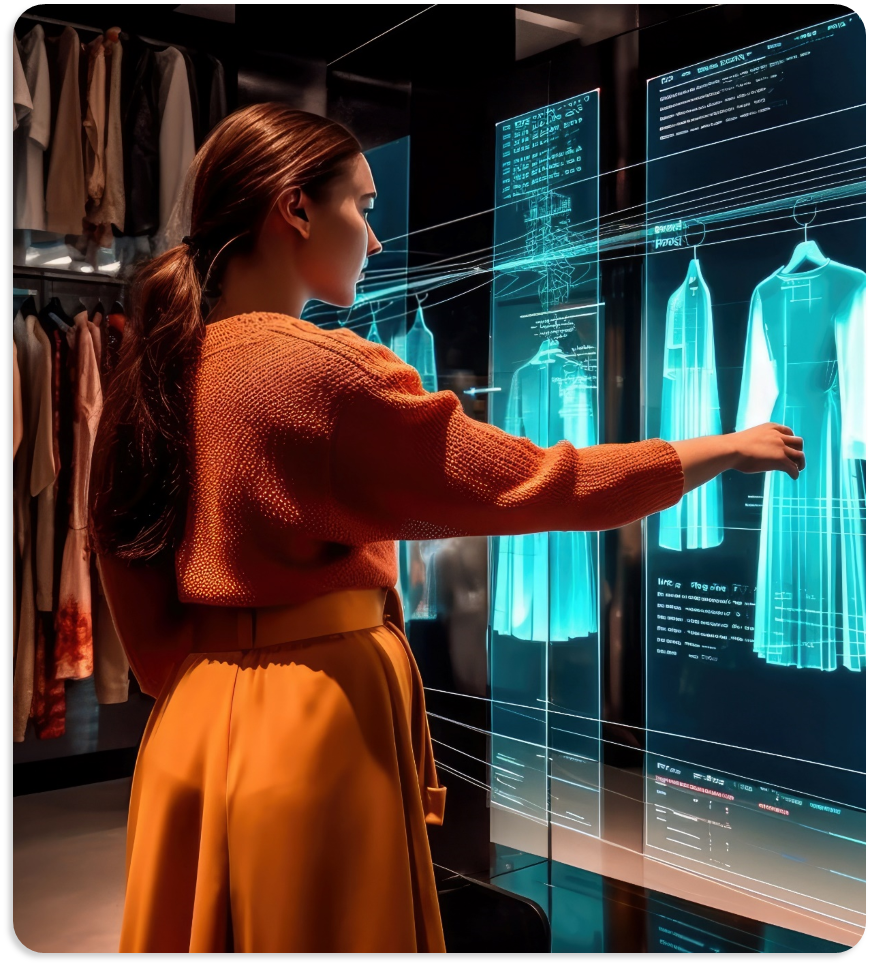High-street retail has been hit hard by the advent of eCommerce.
However, the online buyer experience has its flaws. Without the opportunity to try on clothing, average return rates are 20-30% for online purchases.
In-person shopping (at its best) still has a strong appeal as an activity, not just an efficient means to acquire goods.
Ralph Lauren is seemingly doing more to incorporate technology into its stores than many other retailers.
An example of this is smart fitting rooms that enhance the buyer experience, provide ‘eCom-level’ analytics and provide opportunities for increasing the average order value.
How it works
A customer walks into the dressing room. The lighting comes up and the mirror comes alive with touchscreen functionality.
The mirror shows customers all the items they brought into the dressing room using RFID technology.
From the mirror, customers can adjust the lighting, review the items they brought into the dressing room and request different colours, sizes or cuts.
These requests are sent straight to a sales associate on the shop floor with a tablet and the associate can then bring the customer the requested items.
The customer has the entire store at their fingertips.
RFID for greater efficiency
In addition to using RFID to enable customers to interact with the correct items in the changing rooms, Ralph Lauren uses the technology to locate items in the store and stock room and to check stock numbers.

Upsell opportunities
The sales associate has insights into everything that has been taken into the fitting room and therefore has a chance to bring and recommend complementary items. For example, ‘the perfect belt and shoes to go with that dress you brought in’.
This gives Ralph Lauren the chance to enhance the customer experience, increase goodwill and maximise revenue potential for the store.
Next-level analytics
Product performance analytics & recommendations
Now that there is a digital footprint, the system can analyse the behaviour of customers with each SKU. For example:
“These trousers… whenever someone takes them into the changing room, they buy them. Whereas this other pair has a much lower conversion rate”.
“This item has been taken into the changing room X times whereas this similar item has been picked and taken in Y times”.
This data can add invaluable fidelity for teams such as merchandising, allocation, planning and store operations.
Item pairings can also be analysed and fed into product recommendations, both online and in-store. This can be influenced by the items that customers pick themselves to take into the dressing room and those that convert well when a store assistant recommends them.
Time in changing room
Statistics on time spent in the dressing room can provide insights into consumer behaviour and product performance.

Roll out & adoption
Do customers use it?
According to Digiday, 90% of customers interact with the smart mirrors when they are available.
Cost of adoption
Refitting changing rooms carries a significant cost. As such, Ralph Lauren have only rolled out the technology in a handful of stores so far.
What might an MVP look like?
- To remove the requirement to refit changing rooms, could similar functionality be rolled out with wall-mounted tablets in each (or a small number) of changing rooms? This could cut hardware costs drastically.
- If a business can’t rollout RFID in-store, could they create a web app that scans the barcode on each label and deliver similar functionality? A web app adds an additional benefit of potentially enabling retargeting and online tracking to cross-reference with in-store behaviour.

